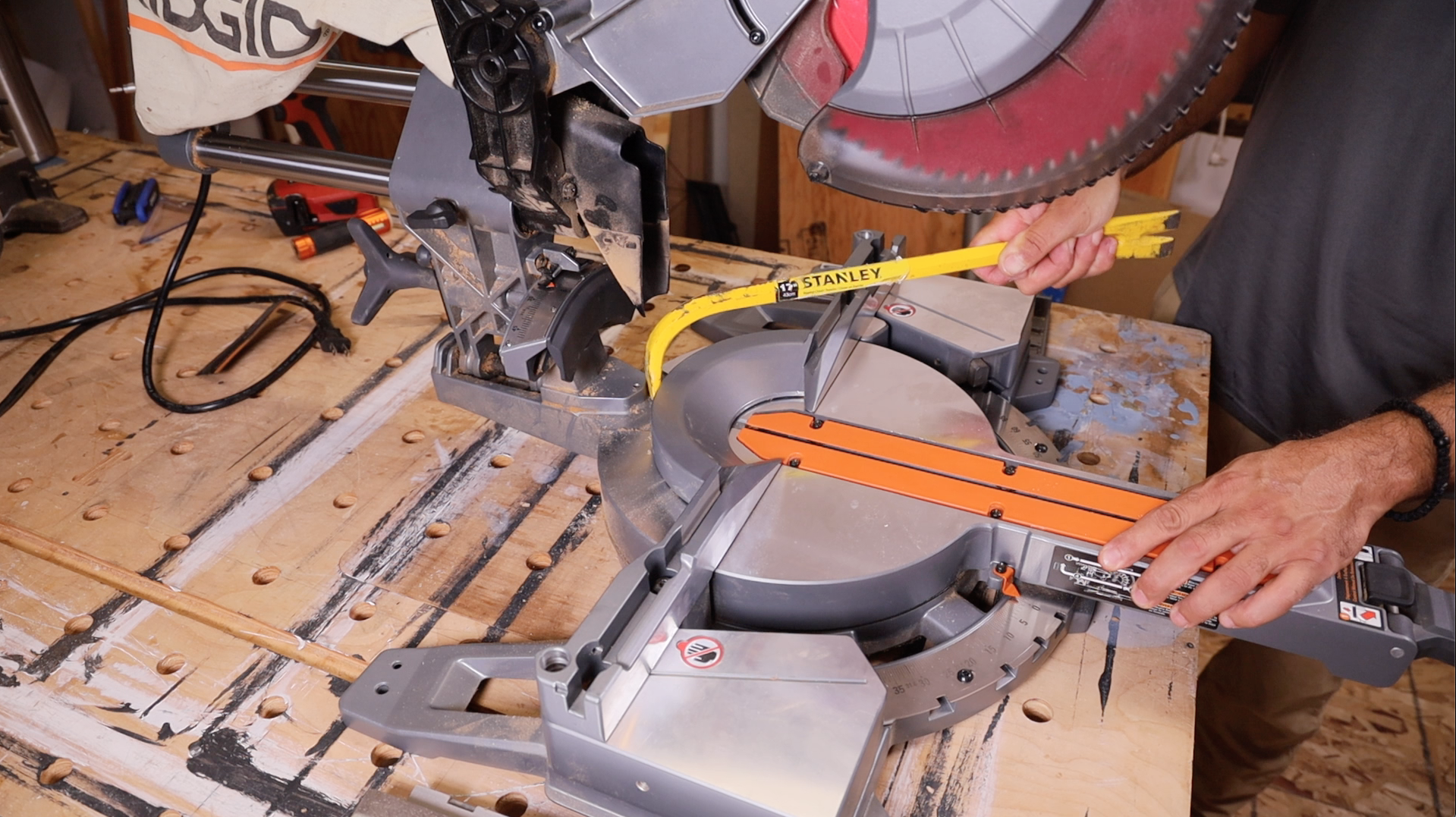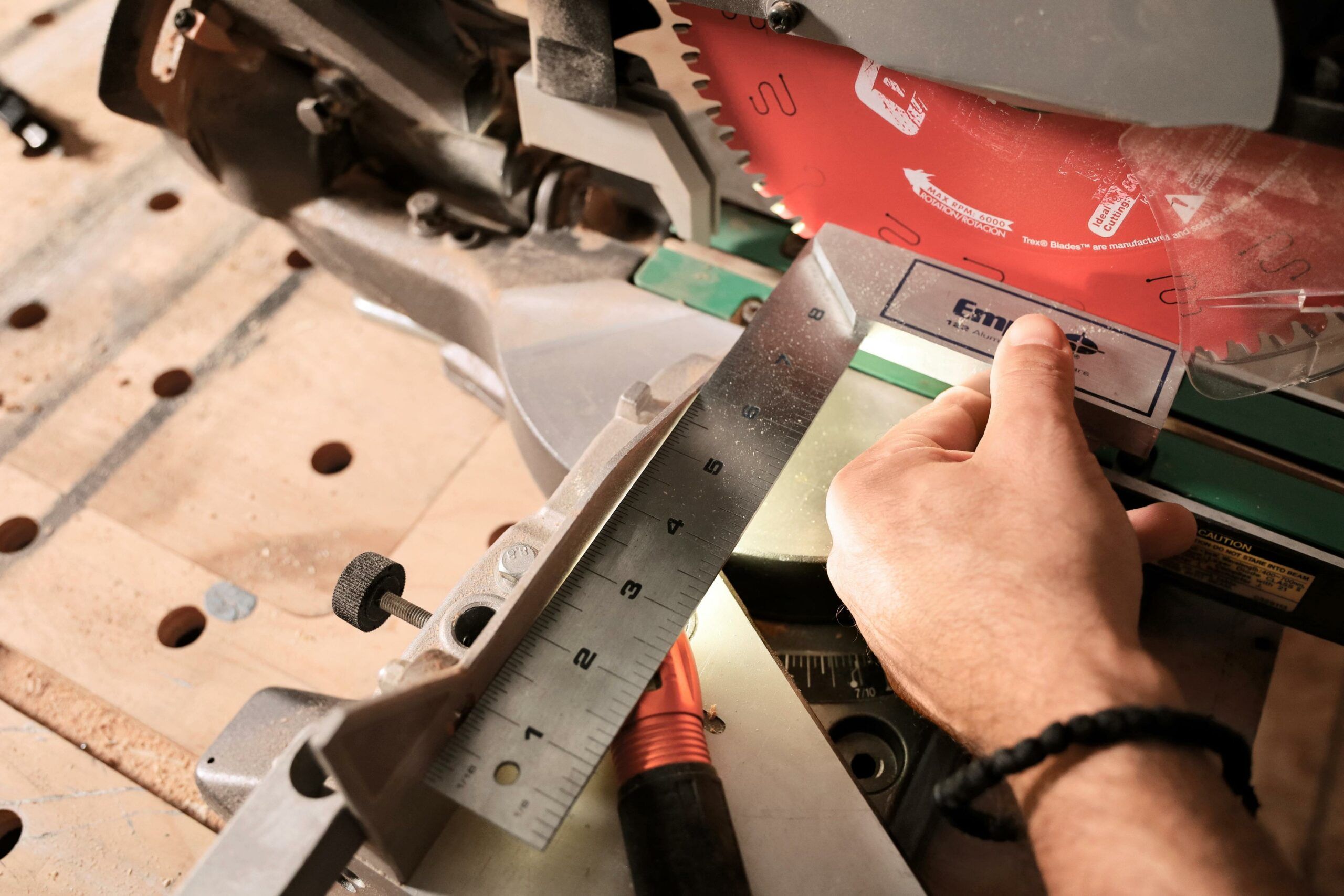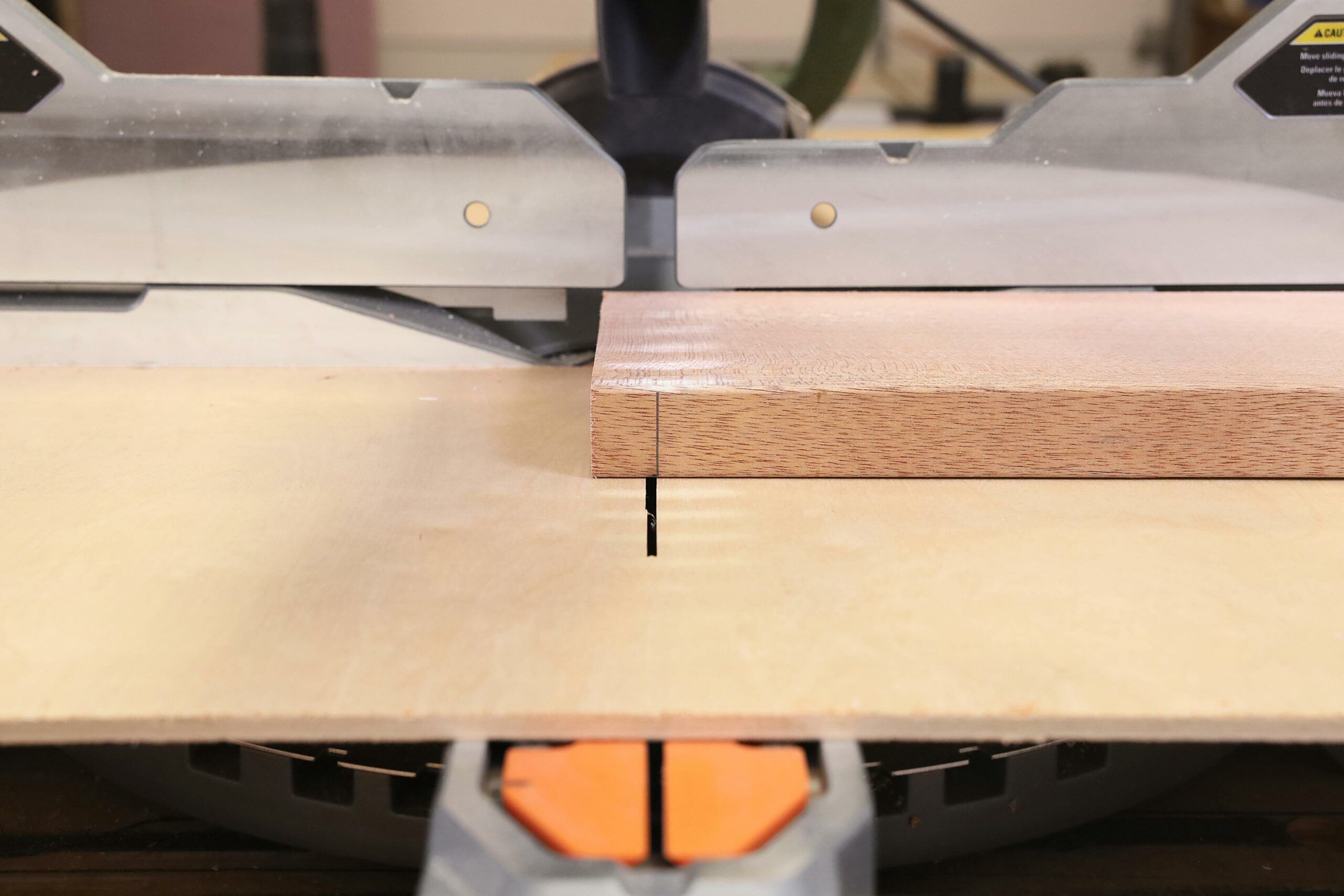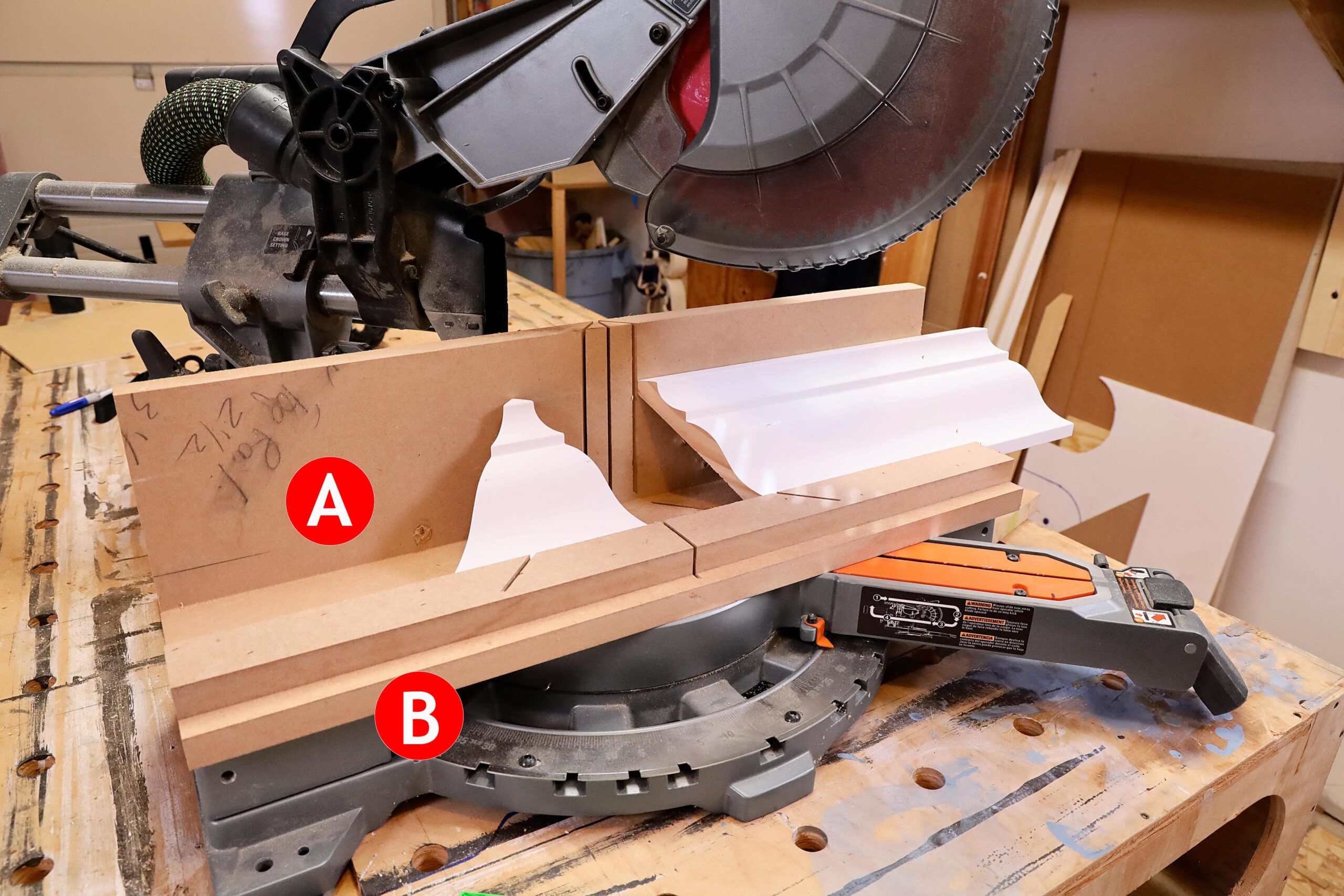We may be compensated if you purchase through links on our website. Our team is committed to delivering honest, objective, and independent reviews on home products and services.
A compound miter saw is a versatile and powerful tool for making precise angled cuts in wood and other materials. Whether you’re a professional carpenter or a DIY enthusiast, understanding how to use and maintain it is key to getting accurate results. This article and the video guide above walk you through using a compound miter saw, tuning it up, and keeping it in top condition.
Compound Miter Saws
Compound miter saws are complex machines that make angled cuts (miter cuts) and tilted cuts (bevel cuts). This is the type used in the demonstration. Miter saws, especially these dual-bevel slide-style types common in many workshops, need occasional adjustments to stay sharp and accurate.
Miter Saw Safety Checklist
Here’s a quick checklist before you make any cuts. Keep these points in mind as you follow along:
- Put on hearing and eye protection.
- Clamp or firmly hold the workpiece down against the saw’s table and back against the fence.
- Support the ends of a long piece so that it lies flat on the saw table.
- Keep your hands at least 6 inches away from the cutline beneath the blade.
- When making bevel cuts, check that the blade will clear the fence. If it doesn’t, slide the fence out of the way.
How To Use a Sliding Compound Miter Saw
Using a sliding compound miter saw safely and accurately involves a few simple steps:
- Step 1: Without turning the saw on, lower the blade and line up the cutline on the workpiece with the blade’s teeth. Then, raise the blade head and pull it all the way toward you.
- Step 2: With the blade head in the “up” position, start the saw and let the blade come up to speed. Slowly pull the head down to engage the blade with the workpiece.

Warning: With these saws, making straight-down chop cuts into stock that’s wider than the blade can throw the cutting head forward or kick the stock out; both are dangerous. To avoid this danger, always start the cut at the front edge of the stock and then push the head back, as shown.
- Step 3: Hold the head down as you push the blade all the way through the work.
- Step 4: Continue to hold the head down as you release the trigger. Wait until the blade comes to a complete stop, then bring the head back to its starting position.
Tip: For smooth cuts with less tear-out, pull the blade head partway down in Step 2 and make a shallow score across the stock’s surface in Step 3. Pull the blade head back, then push it all the way down and through the stock at the score line.
Calibration Tools for Miter Saws
Carpenters have their own preferences for these. Here are mine:
- A straight edge: I prefer a machinist straight edge like this one, but a level, framing square, or the like will do—as long as it’s perfectly straight.
- A try square: I like try squares here because you can register the stock of them on the blade. I’ve had this Empire square for several years, and it’s worked well for me. I know carpenters who swear by combination squares, but I find they can be pushed out of alignment when performing these tasks. I’ve found rafter squares, like my speed square, to not be a good choice because they tend to not be as accurate as you want for this process. Whatever square you use, check its accuracy by registering it along a straight piece of stock, drawing a line, flipping the square, then drawing another line. If the lines converge, it’s not square and while you may look at the convergence as minimal, it will show itself in multiples on the miter saw.
- A clamp (or two, if calibrating a larger saw): I use these Dewalt tracksaw clamps because they have a deep throat to reach past the saw blade teeth.
- Head of a combination square: Use this to set the saw’s 45-degree bevel stop if your saw has one. Depending on the orientation of your saw’s motor and the size of the blade, you may need two sizes, as seen in the video.
- A flashlight: This comes in handy for quickly seeing where adjustments need to be made by shining light behind the square. I like this one from Klein because it’s bright, has a side light, and has a magnet on the back. The only downside is that it’s tough on batteries.
Three Quick Checks for Accurate Cuts With Miter Saws
No matter the brand, size blade, or style, all pro-level dual bevel sliding compound miter saws have adjustment points for bevel, miter, and fence. Some saws have a detent plate at the miter, some have the detents cast into the base. Some saws have a two-piece fence, some have only one.
Some saws have positive stop adjustments for common bevel settings like 22.5 and 45 degrees, others have detent plates. If you don’t know your saw style, it’s in your owner’s manual.
Step 1: Square the Blade to the Table

Lay the long leg of the square against the saw’s table and hold the short leg vertically against the blade.
Shine a light behind the short leg. If a gap shows between the square and the blade, recalibrate the blade’s tilt, per the owner’s manual.
Step 2: Align the Fence

A straight fence is imperative for accuracy and safety. A fence that bows inward toward the back of the blade will cause the blade to bind, kicking the head up and out (if you have a slide-style saw). There are two types of fences: a continuous fence, which includes a yoke, and a two-piece fence.
On saws with a continuous fence, remove the auxiliary fences and lay a straight edge across it. If the fence needs adjusting, loosen the screws and adjust as needed. You can use a pry bar to push against the yoke if necessary.
A two-piece fence can be straightened after you’ve set the miter (below).
Step 3: Square the Fence to the Blade

Place the long leg of a try square against the left-hand fence on top of a lighted flashlight. Push the square’s short leg against the blade, without touching the blade’s teeth. The flashlight’s beam will reveal any gaps between the fence and the square. Adjust the fence per the instructions in the owner’s manual.
On saws that have two separate fences, align the left fence first, then use a straight edge to align the right fence with the left one. Check the saw’s accuracy after making several cuts, and readjust as needed.
Tip: Find gaps with light. When checking a saw’s fence or blade with a square, shine a flashlight behind or under the square. The beam will instantly show through any gaps and indicate where adjustments are needed.
Useful Jigs for a Miter Saw
Jigs can help improve your saw’s performance and accuracy.
Zero-Clearance Jig

This jig prevents tear-out at the bottom of your cuts. Secure a thin piece of plywood or MDF to the saw table, and plunge the blade head into it. The resulting slot is narrow enough to stop the blade from splintering the underside of the wood, and it provides a guide for quickly aligning the cutline on the workpiece, as shown.
Nesting Jig for Crown Molding

This three-piece nesting jig, fastened to the saw fence, supports the molding so it doesn’t twist or slip when being cut. The jig consists of a fence (A) about 1 1/2 inches taller than the crown in its nested position and a cleat attached to a base (B).
The cleat is positioned precisely so that the flats at the back of the crown rest against the jig’s base and fence. All the parts were cut from a sheet of 3/4-inch MDF. Like the zero-clearance jig above, the first cut will leave a kerf in the jig’s fence that clearly shows where to place the work’s cutline on all subsequent cuts.
Maintaining Your Miter Saw
Regular maintenance will keep your miter saw performing at its best:
- Check the blade for sharpness and damage regularly, and replace them when necessary.
- Clean dust and debris from the saw after each use.
- Inspect the power cord and safety features before each use.
- Lubricate moving parts according to the manufacturer’s instructions.
- Store the saw in a dry place to prevent rust and corrosion.
- Examine the dust collection system to check that it’s clear and functional.
